
In 2014 the Syfy channel aired a ‘documentary’ entitled ‘”Aliens on the moon: the truth exposed”, which the UFO crowd squealing for ‘disclosure’ leapt upon like slavering hounds as some sort of vindication of their half-
Unfortunately, when you look at the barely palpable substance of the claims it makes (which are mostly couched in ‘looks like…’, could be…’ and ‘if true…’), there is either nothing there or they are total fabrications.
So, let’s have a look at what claims are made and see what can be made of them. The intention here is to use either photographs from contemporary documents such as NASA mission reports and publications, lunar atlases dating from the period (which for the near side at least consist of images taken by terrestrial telescopes), or photographs taken by agencies other than NASA, because NASA are the bad guys as far as these loons are concerned. However if all I have is an online source I’ll use that too. Get over it.
So (ignoring the stuff about Mars and aliens sucking up plasma from the sun and the dramatic hyperbole), let’s deal with the specifics of the moon stuff in turn.
1. The base at Belyaev baloney
The first claim concerns a collection of white dots found in Belyaev crater, next to Mare Moscoviense, that allegedly appeared in Google Moon. I say ‘allegedly’, because you won’t actually find it there now (assuming it was there in the first place).
Here’s the claimed image, together with the feature:
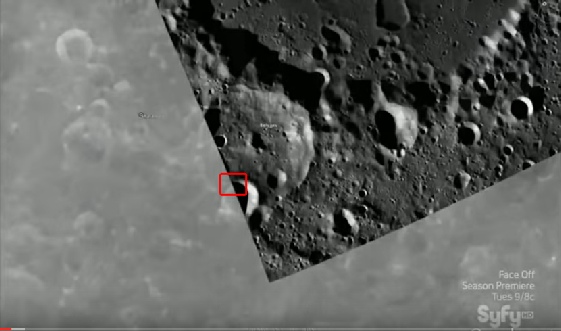
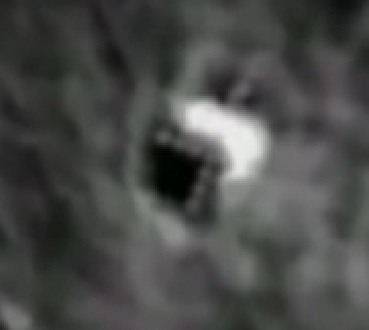
It’s obviously an alien base right? Right angles like that aren’t natural, so that’s the only possible explanation.
Except that the claims don’t stand up to any kind of scrutiny. The image itself was eventually identified as a JAXA one from their Kaguya probe, and thankfully you can download their raw images here. They aren’t the easiest of images to download as, in common with other agencies, they have their own software that can be a little tricky to fathom out. Having done that, however, here are a few selected Kaguya shots of that particular small crater.
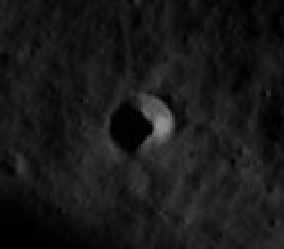
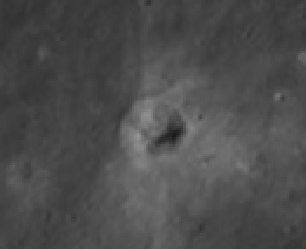
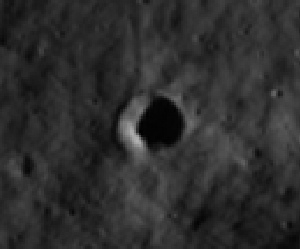
So, three different images of the same small crater within Belyaev and not a sign of any pretty alien lights anywhere.
China also covered the crater, but not at as high a resolution. Below are the views from Chang’e-
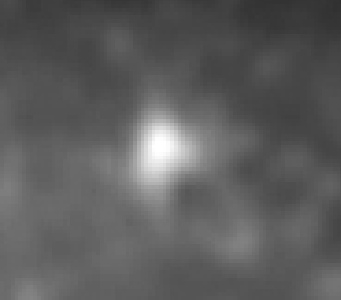
Lunar Orbiter also took oblique images of the site, and while I have a hard copy of this photograph in my copy of the Lunar Orbiter Atlas of the Moon it doesn’t reveal much in comparison with the Japanese images.
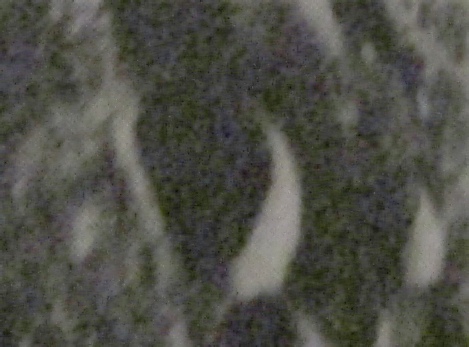
Despite that, we can still happily conclude from the Japanese images that the Kaguya probe did not reveal any alien bases on the moon, largely because the Kaguya probe’s own images don’t show them. The image touted around the internet and reproduced in the Syfy documentary is nothing but stitching errors.
2. Murchison Madness
The next sequence starts off with the programme trying to give itself some semblance of credibility by debunking the claim that it is from a Chinese probe. Here’s the feature it examines:
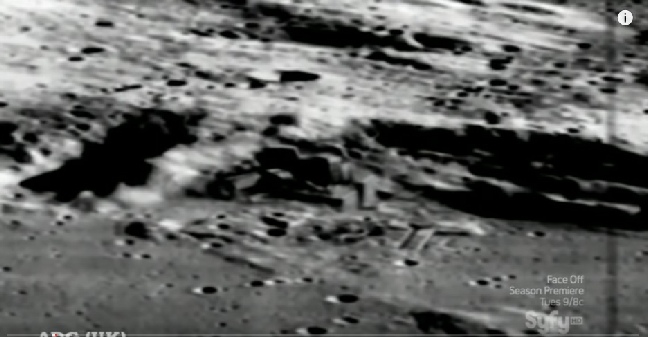
Instead, the programme correctly identifies it as being from a lunar orbiter image, although it fails to name which one it is.
Thankfully there are plenty of people out there who are better informed, and the image has been identified as showing Murchison crater in frame 85 of the 3rd Lunar Orbiter mission, and here it is photographed in my own copy of ‘The Moon as viewed from Lunar Orbiter’ dated 1970. It can also be found in the 1968 hard copy of ‘Exploring Space with a camera’.
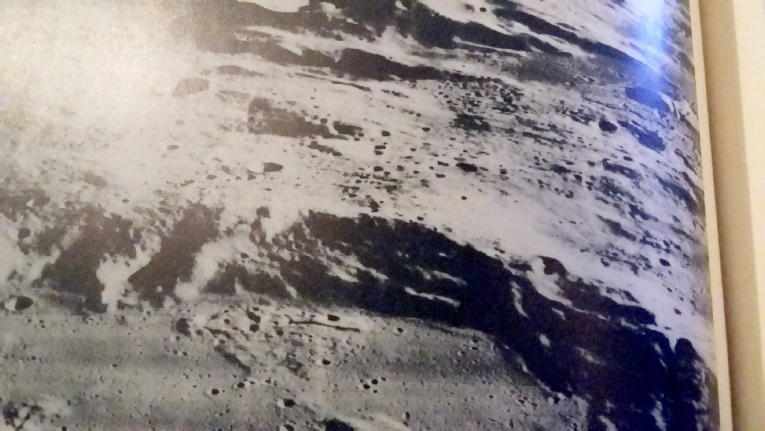
Needless to say this is an exact match for the one I linked to above, but mysteriously the alien base isn’t there. It’s almost as if someone fraudulently added it to try and fool people. Let’s not rely solely on orbital probes -
Here, for example, is Murchison crater from my own copies of Zdenek Kopal’s ‘A new photographic atlas of the moon’ (1971) and Dinsmore Alter’s ‘Lunar Atlas’ (1968) -
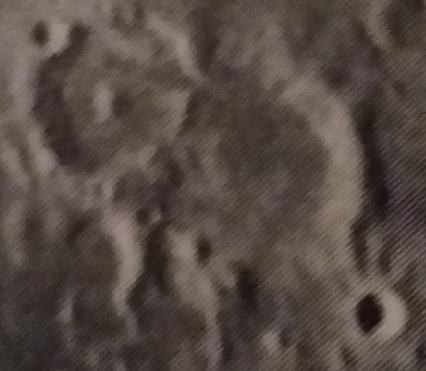
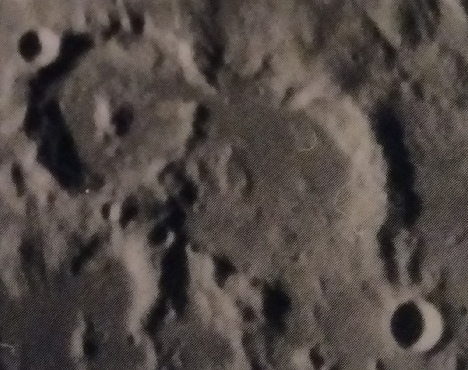
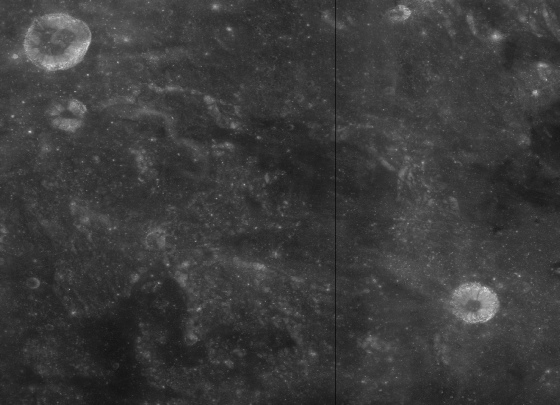
And just to confirm that China didn’t photograph some alien industrial outpost, here’s their view of the crater together with a partial view of the eastern rim of Murchison taken by India’s Chandrayaan probe.
3. Lick Lunacy
However mental UFO devotees might be, they at least believe Apollo went to the moon, and the next bit of lunar lunacy in the ‘documentary’ relates to a claimed fortress and tower in an Apollo image first identified in ‘Someone else is on the moon’.
The photograph in question is AS16-
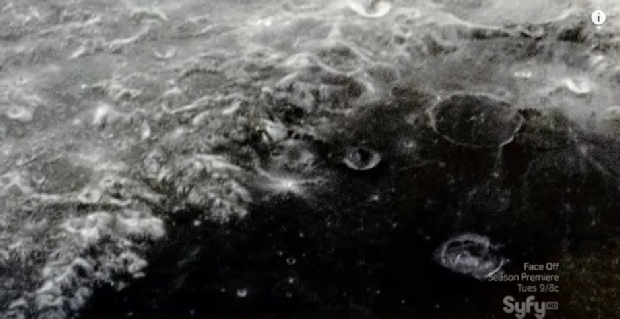
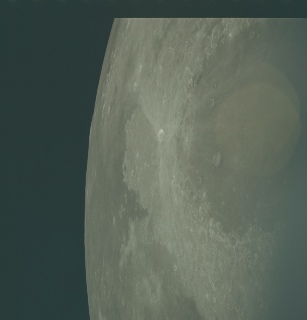
The claim is that this part of Mare Crisium, Lick crater, contains a castellated fortress pointing a big pointy gun at us, together with a big chimney. Here’s their totally convincing and realistic reconstruction of it.
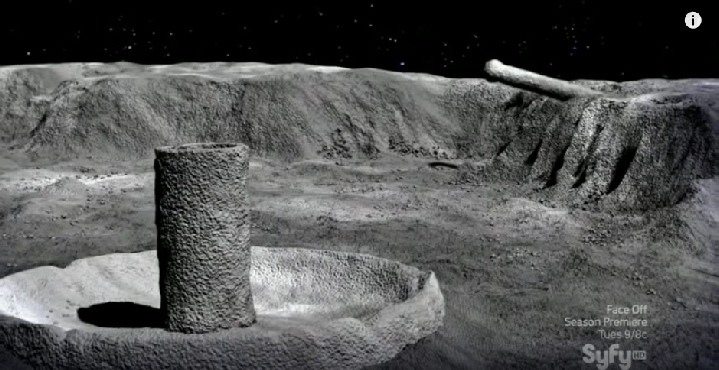
No really, this is what they are claiming.
What this faith in Apollo means is that at least we can use Apollo images to examine the claim, as well as all the other sources available to us, so let’s see what we can find out there. Well, first of all, here’s what Japan (below left) and China (below right) make of it in their views of the place.
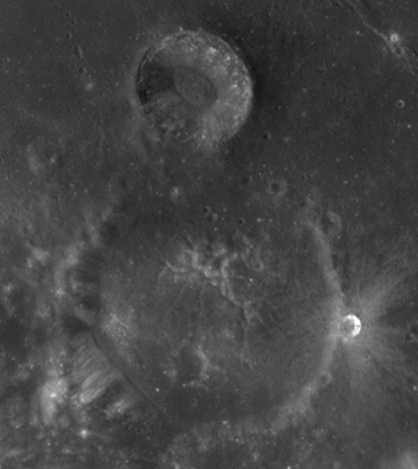
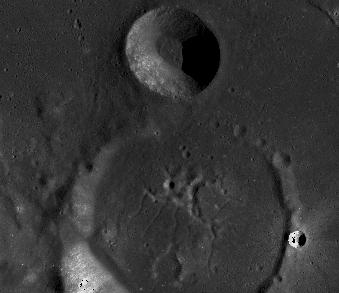
No gun ramparts or chimneys there -


Nope -
Most of the Apollo images reproduced in print form only show Mare Crisium in its broader context, and Lick crater can only be observed as a small feature within that. We do have this image taken by Apollo 8 shown below left, AS08-
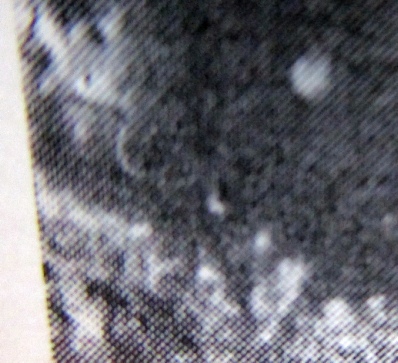
Not much to go on, but you are welcome to check the scanned versions online of the images and see if you can spot a) Any differences and b) Alien gun turrets and chimneys. I’ll save you the time: there aren’t any and there aren’t any.
More useful are Lunar Orbiter and telescopic images. Below left is a 1966 telescopic image featured in A new photographic atlas of the moon (Zdenek Kopal, 1971), while on the right is a section of lunar orbiter image IV-
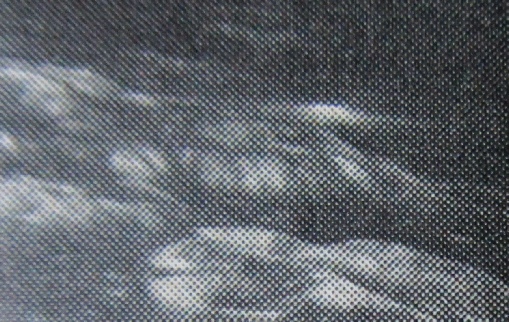
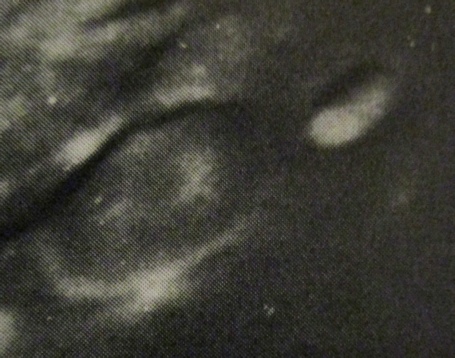
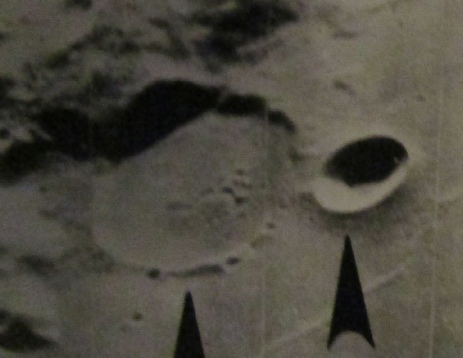
Again, no turrets, no castellations, no gun barrels.
Finally, let’s briefly look at the online images. Seeing as the people in the documentary are happy to pore over digital versions to prove their point, we can use digital ones to disprove them. If this supposed fortress with weapons pointed directly at Earth (aaiieee!!) can be seen one Apollo 16 image, it ought to be in others too right? Well, below left is part of Apollo 15 Metric Mapping Camera image AS15-
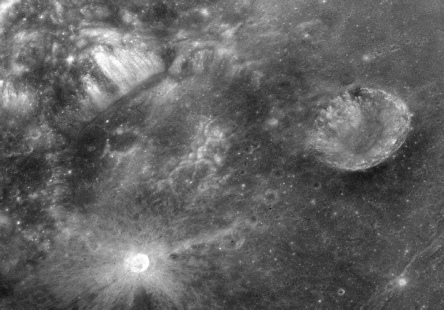
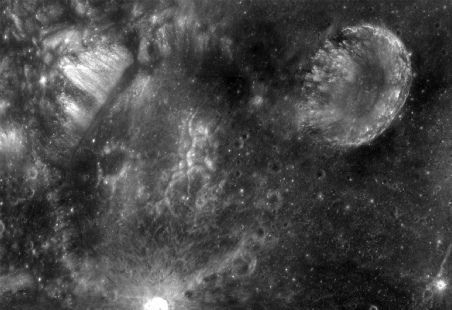
But…but…NASA must have edited them! However seeing as they match exactly what the Japanese and Chinese images show, and they are matched by contemporary photographs, we are left with the conclusion that the claim of there being some sort of gun emplacement and tall chimney arrangement in Lick crater is, not to put too fine a point on it, bollocks.
4. Boulder Trail BS
The program makes some grand claim right at the start that ‘tracks have been discovered’, and this is covered next as it shows some trails on the lunar surface. This in itself is not unusual -
The specific claim here, however, is that the boulder in question rolled uphill and out of a crater. Here’s a direct quote first from the narrator:
“An equally perplexing NASA photo included in the book 'Somebody else is on the moon' seem to show unknown objects causing long deep tracks into the lunar terrain, and at least one of these objects apparently had the ability to move in mystifying ways”.
And then the ‘expert’
“If you follow these back to their point of origin, the one in the foreground rolled up and out of a crater. To me this photograph was in my mind beyond any doubt the smoking gun of activity on the moon, in explicable activity on the moon.”
So, let’s start at the beginning. Here’s the only photograph in the book that refers to boulder trails (below left) and below right is the photo from the programme, composed from a couple of screenshots taken as the camera pans over it.
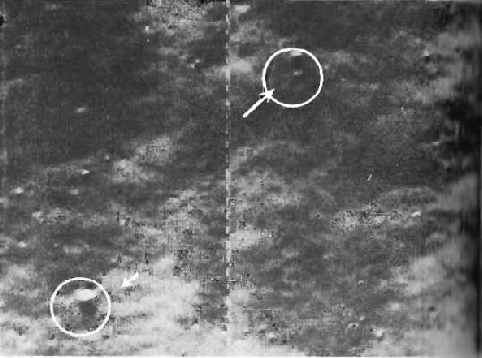
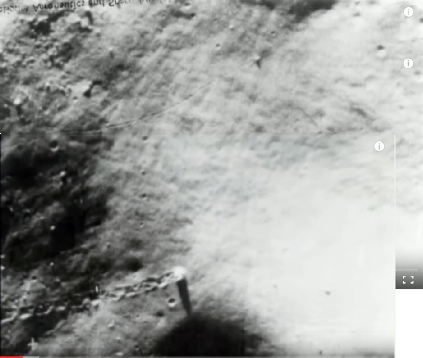
Not a good start really is it. They are clearly two different locations. In fact, the one on the left is identified in the book as Sabine D, also known as Collins after the Apollo 11 CMP. The one on the right is actually in Vitello crater, and is on one of the central peaks of the crater. Here are both the areas in their wider context -
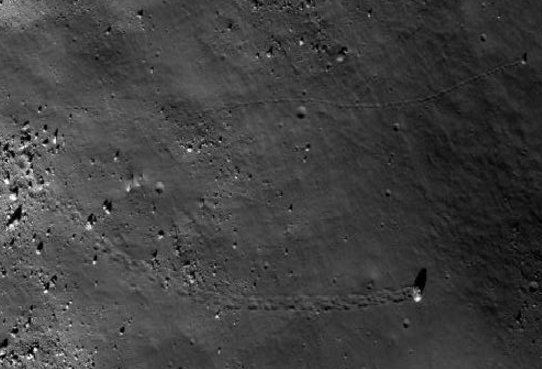

It’s worth noting here that Leonard believes the smaller boulder on the right of the right hand image is also at the end of a trail and one of them must have rolled uphill, but it clearly is not.
Syfy’s claim, on the other hand, is that the boulders rolled up and out of a crater from its source. You can actually follow these two boulders back to to their source. Here it is:
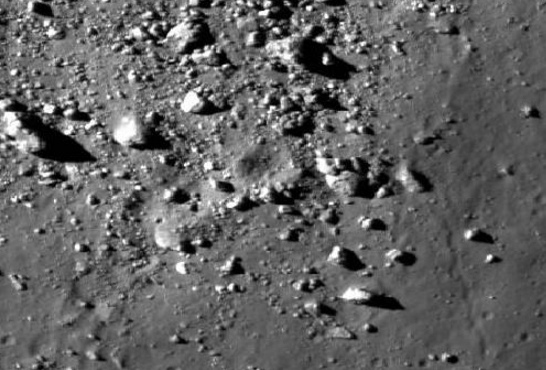
Luckily (and the reason I used it as a source), the LRO website has a tool that allows you to work out distances and slopes. Here’s what happens when you look at the path the two boulders take.
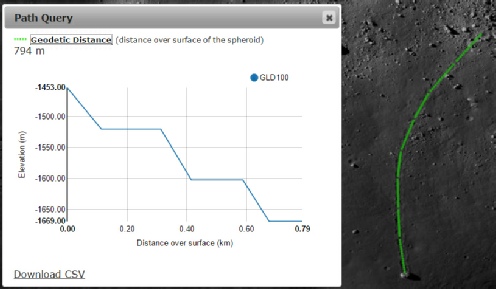
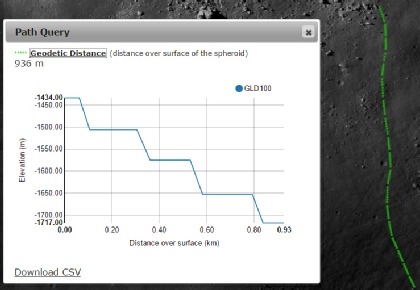
So, not only do neither of the boulders go anywhere near the edge of a crater and are in fact falling down one slope of one of the central peaks, the are quite obviously going downhill. Oh but wait, NASA right? OK, how about you look at what JAXA’s 3D GIS package makes of the Vitello boulder roll.
The source of Leonard’s image isn’t clear, but it’s likely that it is from Lunar Orbiter 2, possibly frame 84. We can be a little more certain of the origin of the Syfy image. The small white cross marks it out as also being from Lunar Orbiter, this time frame V-
While I’m generally trying to avoid using it as a source (because UFO and rabid anti-
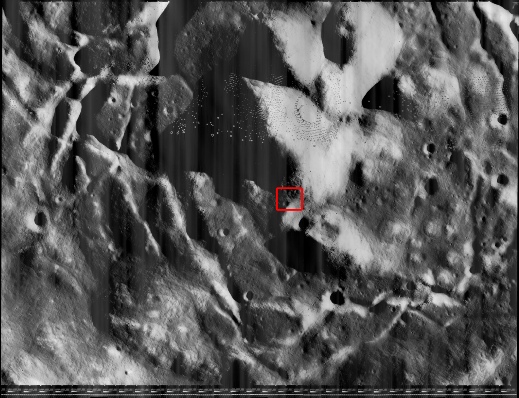
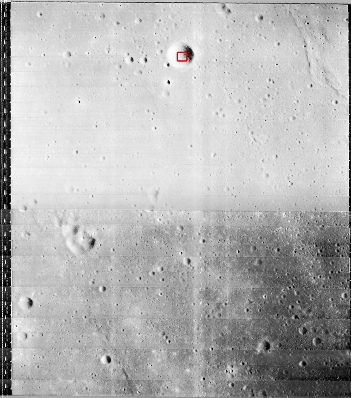
The problem is that it is not a satellite dish, it is a well know crater called Asada -
One of the claimants in the video has been ridiculed at the excellent ‘Emoluments of Mars’ site, amongst others. Suffice to say that many photographs exist of it both from lunar probes, Apollo missions and amateur astronomers. Here are some examples of them.
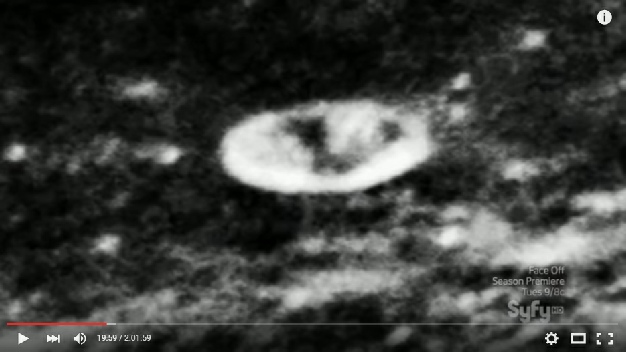
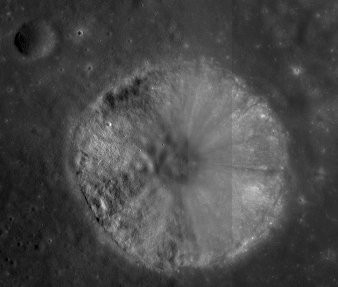
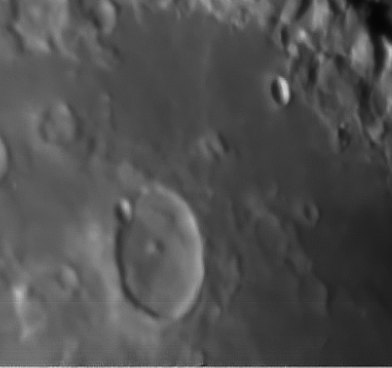
The yellow line here starts at the boulder’s point of origin on the left. The boulder itself can be seen about a quarter of the way along the line; Japan’s ground model shows that it is definitely following a downward slope and only a downward slope, as is the other boulder trail. The image next to the terrain profile shows the perspective view, and again the boulder (highlighted by the red square) is obviously moving down slope.
5. Dish Delusions.
Just when you think you’re done with the Apollo 16 image claiming to have guns and chimneys and what not along comes another stupid claim for the same image -
So, let’s look at the object in question, as identified in the video:
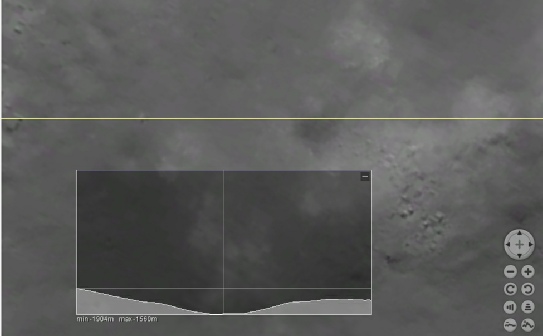
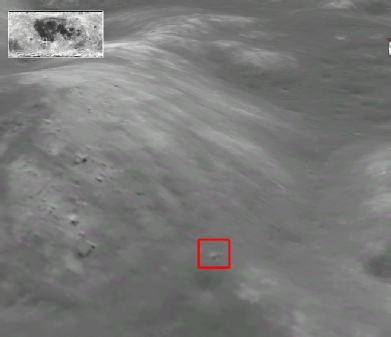
JAXA/Selene
Chang’e-
Earth based telescope. Asada is towards the top right. The larger crater is Taruntius.
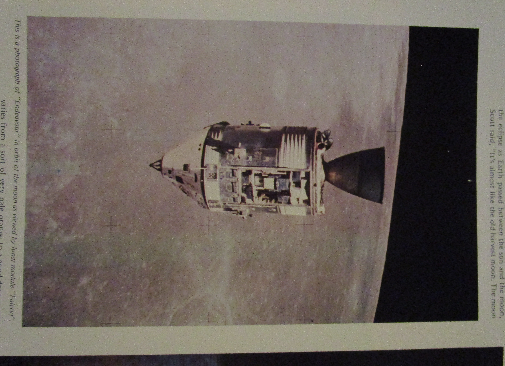
Part of AS15-
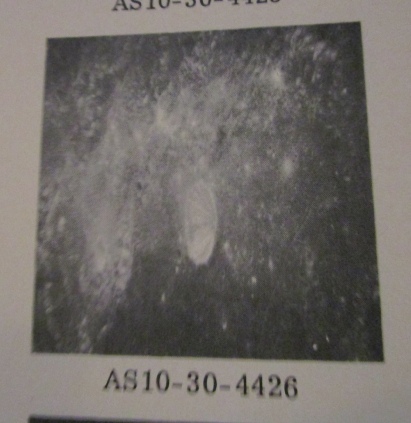
AS10-
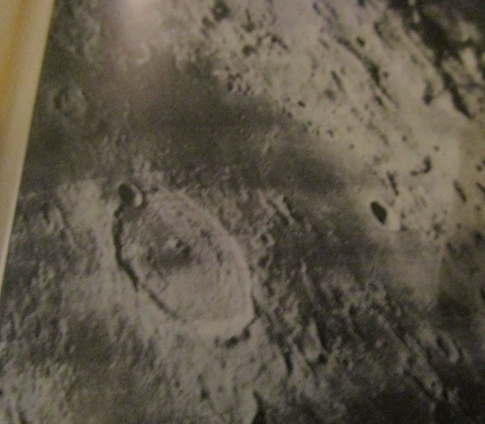
Lunar Orbiter image IV-
Satellite or radar dish?
Really?
No.
Well blow me -
Click below to move on.
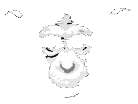

 Bunker
Page 2
Bunker
Page 2
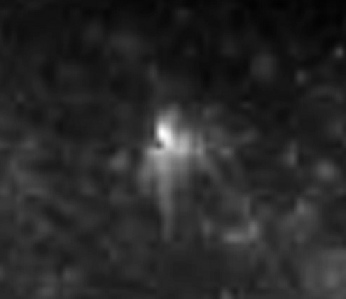 Page 3
Page 4
Page 3
Page 4
